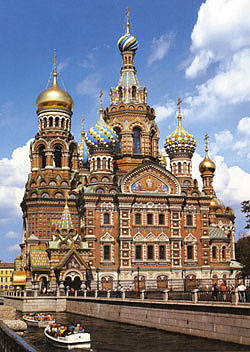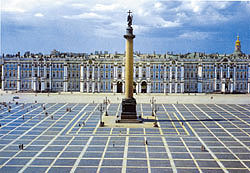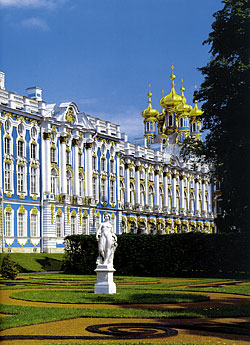SAN PIETROBURGO
One of gems of Europe, Saint Pietroburgo is European than all the Russian cities. It rises on the foce of the Neva river and one shows oneself on the gulf of Finland (mar Baltic). Since the Large one was founded in the 1703 from the Zar Peter, S. Pietroburgo has been beyond that the door of the West of the country also one of the beautifulst cities of the world, richest from the cultural point of view. The city has been constructed on plans of great European architects with largest sfarzo. It is composed from with of islands and isolotti, uniforms from the various arms of the Neva and from numerous channels it crosses to you from 600 bridges very that connect between of they several the quarters. It is the second city of Russia, after Moscow, for number of inhabitants, shares with it the supremacy like cultural and economic center. It is the more important port trades them of Russia. The city extends around to the foce of the Neva river, to the extremity orients them of the Baltic Mar, whose run it divides it in three parts: the northern zone, the zone orients them and that meridional. The heart of Saint Pietroburgo is the rear zone the Palace of Winter and the Admiralty, on the southern side, and its main artery is the Nevskij Perspective. This zone centers them is the reign of the pedestrians inasmuch as it is the lungofiume is the elegant roads are observable better on foot. The northern part of the city is uniform in three main zones: most western it is the Vasilevskyij island, than in its fringe it orients introduces them the antichi and beautiful buildings of the city; the means zone, said Pietrogrado, is composed from a group of isolette of the delta sormontate to south from the high one guglia golden of the Cathedral of Saint Peter and Paul. Draft of the zone where the construction of the city had beginning. The last zone, orients them, dictates Vyborg, is uniform from Pietrogrado from the channel Bolshaya Nevka and the northern side of the Neva extends towards long east. Important cultural center, has numerous museums, between which the famous Ermitage, university colleges, rich libraries, academy of the limbs. The city divenne in the 1712 residence of the imperial court and center of many bureaucratic and administrative activities, knowing a flourishing development. To the explosion of the first world war, its name came changed in Pietrogrado from 1917 to 1924; in 1924, to the dead women of Lenin, divenne Leningrado, name that maintained until to 1991, when with the crisis of the communist regimen it returned to the name originates them. During the second world war it endured, from part of the Germans, a memorable one I besiege lasted 900 days (beyond 600.000 died), succeeding to resist until the liberation happened in January 1944. To Pietroburgo they have grown between the other Pushkin and Dostoevsky, Nureyev and Baryshnikov, Tchaikovsky and Stravinsky. The city also has seen its part of tragedies, comprised the ill-famed one besieges Nazi of 900 days during which the Leningrado (com' then was called) not surrendered, earning the title it of Heroic City. Today, while fight in order to reconquer its traditional maestą and infuence, Pietroburgo remains is a vital artistic center that an architectonic gem splendidly conserved, its inhabitants call it ' Piter' affectionately and they are giving back the aspect to them that in the last ottant' years he had lost. Between the glories of the city there are the Hermitage and the Russian Museum. In the immediate vicinities of the city, and easy raggiungibile with the average publics, three splendid palaces of the zar are found.
Church of resurrection of the Christ

Winter Palace

Palace of Caterina
